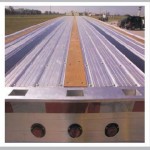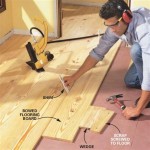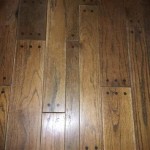How To Repair Dents in Vinyl Plank Flooring
Vinyl plank flooring, known for its durability and stylish appearance, is a popular choice for homeowners. However, even the most robust flooring can succumb to the occasional dent. These dents, often caused by heavy objects or furniture, can detract from the overall appeal of your flooring. Fortunately, repairing dents in vinyl plank flooring is a relatively simple process that can be accomplished with a few readily available tools and materials.
Assessing the Damage
Before embarking on any repair, it's essential to assess the severity of the dent. Minor dents, resembling shallow indentations, can often be addressed with simple methods. However, deep dents that have left visible cracks or fissures require a more comprehensive approach. Understanding the extent of the damage will determine the most appropriate repair technique.
Repairing Minor Dents
For minor dents, a combination of heat and pressure can effectively restore the flooring's surface. Here's a step-by-step guide:
- Gather materials: You'll need a hairdryer or heat gun, a soft cloth, and a heavy object, such as a book or a flat piece of wood.
- Apply heat: Direct the hairdryer or heat gun towards the dented area, focusing on the immediate vicinity. The heat should be sufficient to soften the vinyl without causing any damage.
- Apply pressure: While the vinyl is still warm, gently place the heavy object over the dent and apply firm, even pressure. This will aid in pushing the vinyl back into its original form.
- Maintain pressure: Keep the weight in place for several minutes to allow the softened vinyl to cool and solidify.
- Reapply heat and pressure: If the dent persists, repeat the process of applying heat and pressure until the desired result is achieved.
Repairing Deeper Dents
Deep dents that have caused visible cracks or fissures require a more involved repair process. This involves filling the dent with a vinyl filler or epoxy resin.
- Prepare the area: Clean the dented area thoroughly with a damp cloth to remove dirt and debris. Allow the area to dry completely before proceeding.
- Apply filler or epoxy: Carefully fill the dent with vinyl filler or epoxy resin, ensuring the material completely fills the void. Use a putty knife or a similar tool to smooth out the filler or resin, creating a level surface.
- Allow drying time: Allow the filler or resin to cure completely according to the manufacturer's instructions. This typically takes several hours.
- Sand and smooth: Once the filler or resin has cured, use fine-grit sandpaper to smooth out any rough edges or uneven areas. Be careful not to sand excessively, as this could damage the surrounding vinyl.
- Apply sealant: If desired, apply a sealant to the repaired area to protect the vinyl from further damage and add a layer of protection.
Preventing Future Dents
While dents are inevitable, you can take steps to minimize their occurrence and ensure the longevity of your vinyl plank flooring. Here are some preventative measures:
- Use furniture pads: Place protective pads beneath furniture legs to distribute weight evenly and reduce the risk of dents.
- Avoid dragging heavy objects: Dragging heavy objects across the flooring can easily cause dents. Instead, lift and carry heavy items to prevent unnecessary wear and tear.
- Regular maintenance: Regularly sweep or vacuum your flooring to remove dirt and debris that can contribute to dents.

How To Fix Dents In Laminate Flooring 3 Easy Ways Floortheory

Avoid Costly Mistakes Repairing Vinyl Plank Flooring Made Easy

How To Fix Scratches On Luxury Vinyl Plank Flooring Steps

How To Fix Vinyl Plank Flooring

Vinyl Flooring Maintenance Cleaning How To Fix A Dent In Soft Floor

How To Easily Fix Dents In Hardwood Floor Esb Flooring

How To Correctly Fix Dents And Scratches In Hardwood Floors

Vinyl Flooring Maintenance Cleaning How To Fix A Dent In Soft Floor

The Disadvantages Of Vinyl Plank Flooring A Guide Reallyfloors America S Est Hardwood

Get Rid Of Dents And Scratches On Your Hardwood Floors
Related Posts








